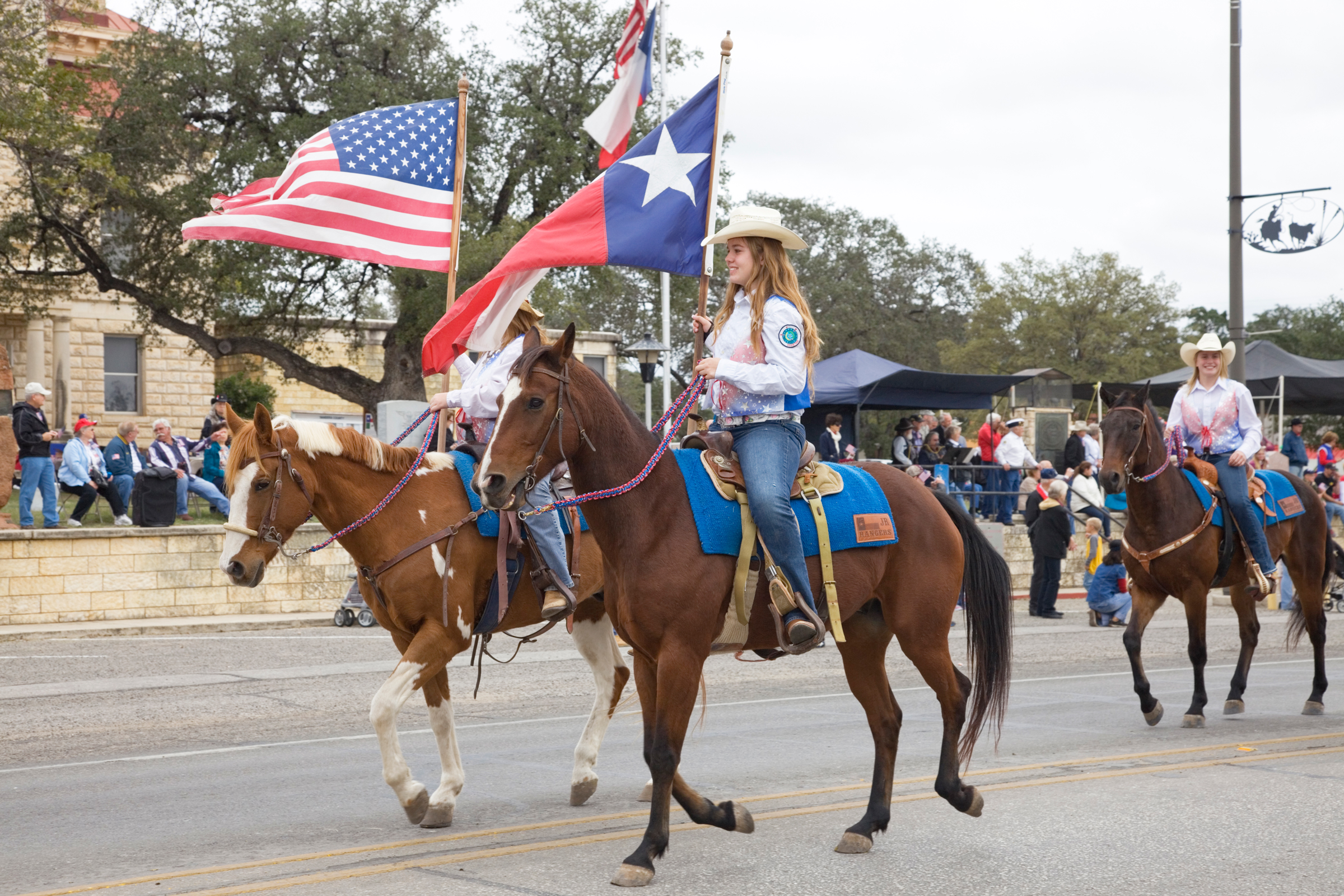
Parades are a festive way to celebrate holidays and community events. Horses are a fan favorite in parades.
Small town parades often don’t have rules or dress codes, explained Maggie Herlensky, president of the American Sidesaddle Association. She has ridden in a variety of parades from local processions to two presidential inauguration parades in Washington D.C.
“Smaller parades don’t require pooper scoopers because all of the horses are at the end of the parade, and they’ll just run a street sweeper after the parade or just pray for rain,” she said.
Larger parades have rules that vary widely. Most require someone to pick up manure and that horses have safety walkers. Herlensky said requirements range from horses wearing a halter under the bride to borium on the shoes to prevent slipping on blacktop.
“One parade requires a chinstrap,” she said. “We assume they meant throatlatch after a horse pulling a carriage in a parade slipped his bridle and ran through the crowd, but we put curb straps on all our snaffle bridles, anyway.”
Regardless of the size of the parade, Herlensky offers these tips to prepare a horse for the crowds.
- Expose your horse to everything possible beforehand. Find a group of experienced horses to tag along with when you enter your horse in a parade for the first time.
- Hang things off the horses and around the horses at home. They should get used to flags, banners, crowds and trash blowing under their fee.
- Introduce them to busy roadways and traffic before lining up at the parade route.
- Introduce horses to street obstacles. Make sure they willingly walk across painted lines in the street, sewer grates, painted logos, manhole covers, etc. They should be able to step up and down from curbs.
- Leave horses barefoot. She recommended using the sticky-back stairstep tread material on shoes for traction, if needed. “It looks like black sandpaper,” she said. “Cut it into strips and put it on the bottom of the shoes just before you step off. If your horse will be wearing anything new, have him try it at home first.”
- Expose horses to different loud noises. Ask the local high school band if they will let you park nearby during an outdoor practice. “Most horses don’t like drums, but will tolerate them from a distance. Some absolutely hate them,” she said. “It’s best to know which category your horse falls in.”
When you are asked if your horses would like to be in the next parade or community gathering, make sure that they will be good citizens and won’t be scared. Work on desensitization well before the event, and practice around as many obstacles and noises as possible ahead of time.
Then when your well-mannered horses are the hit of the show, you will be happy to go back again in the future for the next parade.


